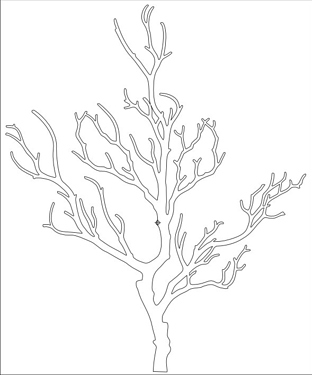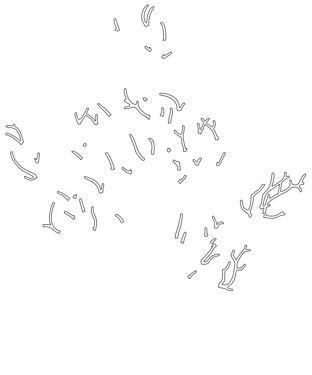Here’s how I do this. This example cuts a pocket in ebony to inlay a “snag”. The overall pocket looks like this:
But when I first cut with a larger bit, for speed, wear and duribility, the finer branches are not yet pocketed. To cut them, I use a second svg which appears like this:
This svg was created by editing out the portion of the original which would have been cut in the first pass. To find out what yet needs to be cut with the fine bit, I make a circle corresponding to the diameter of the larger bit and move it around the original drawing to determine the regions too narrow for that bit to have cut. I also use this concept to fabricate the original drawing such that all regions can actually be cut with the bits at hand.
This method was also used to cut the snag which has branches ranging down to 1 mm in width.

